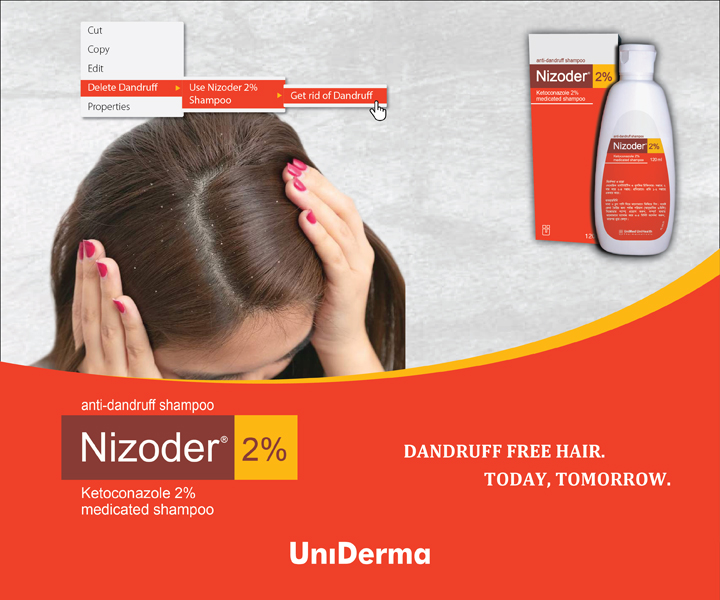Photoprotection for Individuals with Skin of Color
The British Journal of
Dermatology: November,
2022
Skin of color, also known as
pigmented skin, possesses distinctive characteristics. Traditionally, the
Fitzpatrick classification classifies these individuals as predominantly having
skin types IV-VI, though it may also include type III.
However, more recent classification
systems, such as the individual typology angle (ITA), offer a more precise and
objective approach.
Skin of color is typically characterized
by an ITA value of < 28°. The ITA system categorizes skin types into six
categories ranging from very light (> 55°) to dark (< -30°), including
light (41° to < 55°), intermediate (28° to < 41°), tan (10° to < 28°),
and brown (-30° to < 10°).
People with skin of color are at a high
risk of skin damage from UV radiation, leading to conditions like
photodermatoses and uneven skin tone.
Photoexacerbated pigmentary disorders are a common reason for dermatology consultations. However, they may be less inclined to use sunscreens and physicians are less likely to prescribe them. Improved education and more effective photoprotection are necessary for this population.
TAKE-HOME MESSAGE
Photoprotection provides
significant benefits for conditions like photoaging, photocarcinogenesis, and photo exacerbation of pigmentary disorders. Individuals with skin of color often
require specialized sunscreen formulations to ensure effective compliance.
There are many benefits of photoprotection for individuals with skin of color, and the knowledge of targeted sunscreen formulations can help dermatologists educate their patients.
Conclusions
Skin of color is constitutively better protected against
photocarcinogenesis and photoageing than lighter skin. However, individuals
with skin of color present with higher rates of pigmentary disorders, which
significantly impact the quality of life.
Dermatologists should be aware of
the impact of UVB, UVA, visible light, and infrared A on people with skin of
color and educate them about photodamage and associated risks.
Prescribing photoprotective
measures is crucial, including the regular use of sunscreens that are
well-tolerated, cosmetically acceptable, and have a high SPF. These sunscreens
should offer broad-spectrum protection against UVA1 and visible light.
For individuals with skin of color,
targeted sunscreens need to have optimal cosmetic appeal, leaving no white
residue and not disrupting skin tone.
They should provide broad-spectrum
(UVB/UVA) protection with a high sun protection factor and include protection
against long-wave UVA (UVA1) and visible light, as these wavelengths can induce
or worsen pigmentary disorders. In some cases, depigmenting agents may also be
included for patients with pigmentary disorders.
Doctors Liked to Read More
Skin damage secondary to UVR affects not only individuals
with light skin tones, but also people with darker skin tones.
Photocarcinogenesis in skin of colour
While individuals with skin of colour are better protected
against photodamage, UVR exposure still represents a risk factor for skin
cancer in populations with skin of colour, including American, Asian and
Hispanic groups.
While skin cancer is less frequent in people with skin of
colour, outcomes are poorer in these individuals.
Photoageing in populations with skin of colour
Photoageing typically results from chronic UVR exposure, and
manifests as wrinkles, elastosis, uneven pigmentation, pigment spots and
telangiectasia. There is a major concern about facial photoageing, as it has
been linked to social acceptance, status and beauty. Solar elastosis is
induced by both UVB and UVA, and is the hallmark of photoageing.
Pigmentary disorders in skin of colour
Patients with skin of colour have an increased susceptibility
to developing pigmentation disorders such as melasma and postinflammatory
hyperpigmentation (PIH).
Regarding hypopigmentary disorders, pityriasis alba can be
particularly bothersome for patients with darker skin, and vitiligo can
cause a significant detrimental effect on quality of life.
Photoprotective practices among people with skin of colour
Photoprotective measures include minimizing sun exposure
during its peak UVR (10.00–14.00 h); seeking shade; wearing sunglasses,
wide-brimmed hats and photoprotective clothing; and applying sunscreen.
Furthermore, individuals with skin of colour should also be protected against
UVA1 and visible light, which are much more constant through the year and
through the day. Multiple studies have shown that patients with skin of colour
are less likely to follow photoprotective recommendations.
Targeted sunscreen formulations for individuals with darker
skin tones
Sunscreens for skin of colour should protect not only against
UVB and UVA2, but also against UVA1 and visible light to minimize
hyperpigmentation. UVA1 can induce photoageing, and a recent review showed that
visible light could also be involved in the photoageing process, with
shorter-wavelength blue light having the most noticeable effects.
Characteristics of
recommended sunscreens in people with skin of colour
Sun protection
At least sun protection factor 30
Ultraviolet B + ultraviolet A + high-energy visible light
Other ingredients
Should contain antioxidants, anti-inflammatories and/or
immunomodulators
Depigmenting agents (resorcinol derivatives, Tetrapeptide-30,
niacinamide) could improve results in patients with hyperpigmentary disorders
Tinted sunscreens containing formulations of iron oxides and
pigmentary titanium dioxide can protect against visible light
Oral photoprotection in individuals with skin of colour and
in pigmentation disorders
Antioxidants, anti-inflammatories and/or immunomodulators are
currently used for oral photoprotection. Examples are vitamins such as
L-ascorbic acid (vitamin C), tocopherol (vitamin E) and carotenoids (vitamin A
derivatives).
These supplements can enhance cutaneous defence against solar
erythema and photodamage, and recent evidence suggests that mixed
carotenoids can significantly protect against UVA1 radiation-induced skin
pigmentation.






Comments
You must login to write comment